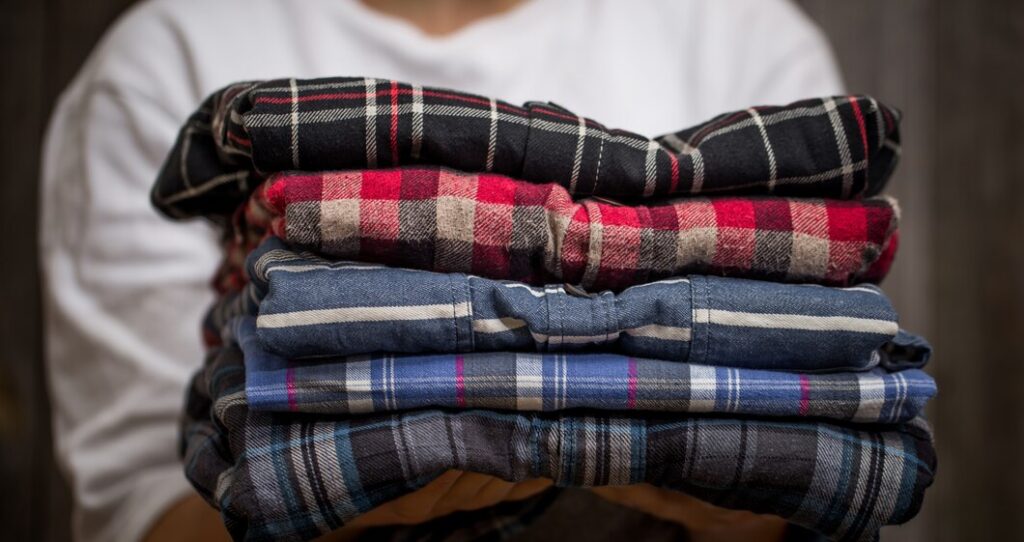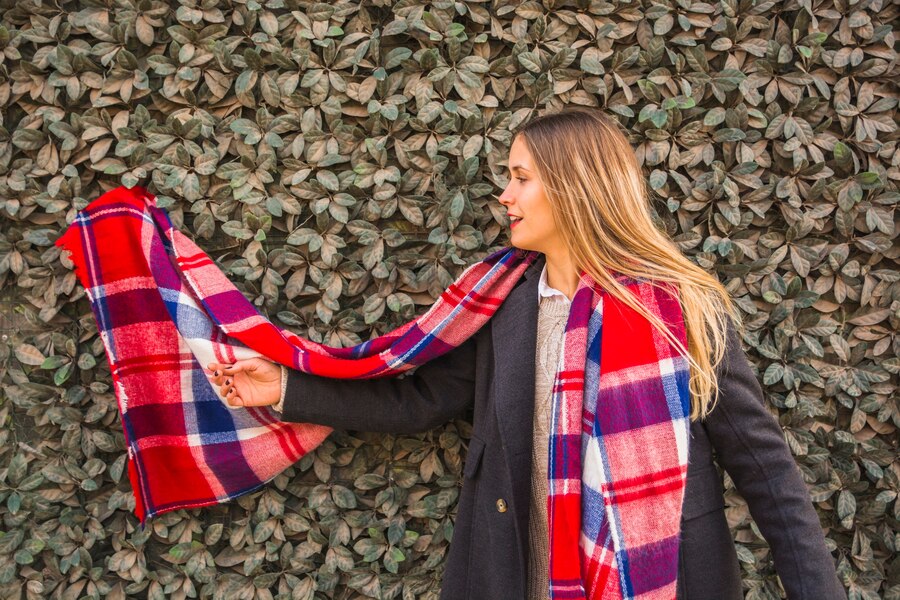Flannel is more than just a fabric; it’s a lifestyle. Soft, warm, and incredibly versatile, flannel has carved out a permanent place in both fashion and home décor. But what exactly is flannel, and why has it remained so popular for so long? Let’s dive into the world of flannel, exploring its history, uses, and enduring appeal.
What is Flannel?
Flannel is a soft woven fabric, typically made from wool, cotton, or synthetic fibers. Known for its comfort and warmth, it’s often brushed to create extra softness. The classic flannel pattern is the plaid, but flannel can come in a variety of colors and designs.
Brief History of Flannel
Flannel’s origins trace back to 17th century Wales, where it was first made from fine, carded wool. Over time, the fabric spread across Europe and America, becoming especially popular among farmers and laborers for its warmth and durability. Today, flannel is a staple in wardrobes and households worldwide.
Materials Used
Flannel can be made from different materials, including wool, cotton, and synthetic fibers. Cotton flannel is especially popular for its softness and breathability, while wool flannel offers superior warmth.
The Manufacturing Process
The creation of flannel involves weaving and sometimes knitting the fibers, followed by a process called napping. Napping is where the fabric is brushed to raise the fibers, giving flannel its signature softness and fuzzy texture.
Types of Flannel
There are several types of flannel, including:
Wool Flannel: Warm and durable, ideal for cold climates.
Cotton Flannel: Soft and breathable, suitable for everyday wear.
Synthetic Flannel: Made from polyester or other synthetic fibers, often more affordable.
Comfort and Warmth
One of the main reasons flannel is beloved is its incredible comfort. The napped surface feels soft against the skin, and the fabric’s thickness provides excellent insulation, making it perfect for chilly days.
Versatility in Fashion
Flannel’s versatility is unmatched. It can be dressed up or down, used in casual wear or more formal settings. Whether it’s a cozy flannel shirt, a stylish jacket, or comfy pajamas, flannel fits any wardrobe.
Durability
Flannel is known for its durability. High-quality flannel can withstand frequent washing and wear without losing its shape or softness, making it a practical choice for everyday use.
Classic Flannel Shirts
The classic flannel shirt is a wardrobe staple. Available in a range of colors and patterns, particularly the iconic plaid, it’s perfect for layering in cooler weather.
Modern Uses of Flannel
Flannel has evolved beyond shirts. It’s now used in a variety of clothing items, including dresses, skirts, and even suits. Designers have embraced flannel for its comfort and style, incorporating it into contemporary fashion trends.
Celebrity Endorsements
Flannel has also found favor among celebrities, adding to its popularity. Stars like Kurt Cobain and more recently, fashion icons like Kanye West, have sported flannel, cementing its place in pop culture.
Flannel in Winter
In winter, flannel is a go-to fabric. Its insulating properties make it ideal for shirts, jackets, and blankets, providing much-needed warmth during the colder months.
Flannel in Summer
Surprisingly, flannel can also be worn in summer. Lightweight cotton flannel is breathable and comfortable, perfect for cooler summer evenings or air-conditioned environments.
Year-Round Appeal
Thanks to its variety in weights and materials, flannel offers year-round appeal. Whether it’s a light flannel shirt for spring or a heavy flannel jacket for fall, there’s a flannel option for every season.
Washing Tips
To keep your flannel looking its best, wash it in cold water on a gentle cycle. This helps prevent shrinking and maintains the fabric’s softness.
Drying and Storing
Air drying is the best option for flannel, but if you use a dryer, select a low heat setting. Store your flannel in a cool, dry place to avoid mildew.
Repairing and Maintaining
If your flannel gets a tear or loses a button, don’t worry. Flannel is easy to mend. Regular maintenance, like removing pilling and patching small holes, can extend the life of your flannel garments.
Sustainable Production
Many brands are now focusing on sustainable production methods for flannel, using organic cotton and eco-friendly dyes to minimize environmental impact.
Organic Flannel Options
Organic flannel is becoming more popular, offering consumers an eco-friendly choice. Made from organic cotton and free from harmful chemicals, it’s better for both the environment and your skin.
Home Décor
Flannel is a popular choice for home décor. Flannel blankets, sheets, and pillowcases add a cozy touch to any room, perfect for snuggling up during colder months.
Accessories
From scarves and hats to tote bags and slippers, flannel is used in a variety of accessories, adding a touch of warmth and style to your ensemble.
Crafts and DIY Projects
Flannel is also great for DIY projects. Its softness and ease of use make it perfect for creating handmade items like quilts, toys, and holiday decorations.
Identifying High-Quality Flannel
When shopping for flannel, look for a dense weave and a soft, napped surface. High-quality flannel will feel substantial and resist pilling.
Trusted Brands and Makers
Brands like Pendleton, LL Bean, and Woolrich are known for their high-quality flannel products. Investing in reputable brands ensures you get durable and comfortable flannel.
Price vs. Quality
While higher-quality flannel may cost more, it’s often worth the investment. Cheaper flannel may wear out quickly, while a good quality piece can last for years.
Iconic Flannel Moments in Movies and TV
Flannel has had its moments in the spotlight, from the rugged looks in “Twin Peaks” to the grunge style of “Clueless.” These iconic appearances have helped keep flannel in vogue.
Music and Flannel
The grunge movement of the 90s, led by bands like Nirvana and Pearl Jam, brought flannel to the forefront of music fashion. This association with rebellious style keeps flannel cool and relevant.
Trends to Watch

Flannel continues to evolve, with trends like oversized flannel shirts and flannel-lined jeans gaining popularity. Keep an eye out for innovative uses of flannel in fashion.
Innovations in Flannel Production
Advancements in textile technology are leading to new types of flannel, such as moisture-wicking and stretch flannel, enhancing its functionality and appeal.
Conclusion
Flannel is a fabric that has stood the test of time. From its humble beginnings in Wales to its modern-day applications, flannel continues to be a favorite for its comfort, durability, and versatility. Whether you’re dressing up, staying cozy at home, or crafting, flannel is the perfect choice. Embrace the timeless charm of flannel and make it a staple in your life.
FAQs
How do you soften flannel fabric?
To soften flannel, wash it with a cup of white vinegar in the rinse cycle. This helps to break down any residue and soften the fibers.
Is flannel only for cold weather?
No, flannel can be worn year-round. Lightweight flannel is perfect for cool summer nights, while heavier flannel is ideal for winter.
Can flannel be worn professionally?
Yes, flannel can be styled for a professional look. Opt for tailored flannel shirts or dresses in solid colors for a polished appearance.
What is the difference between flannel and plaid?
Flannel is a type of fabric, while plaid is a pattern. Flannel can come in various patterns, including but not limited to plaid.
How can I prevent my flannel from shrinking?
To prevent shrinking, wash your flannel in cold water and air dry it. If you use a dryer, select a low heat setting.
